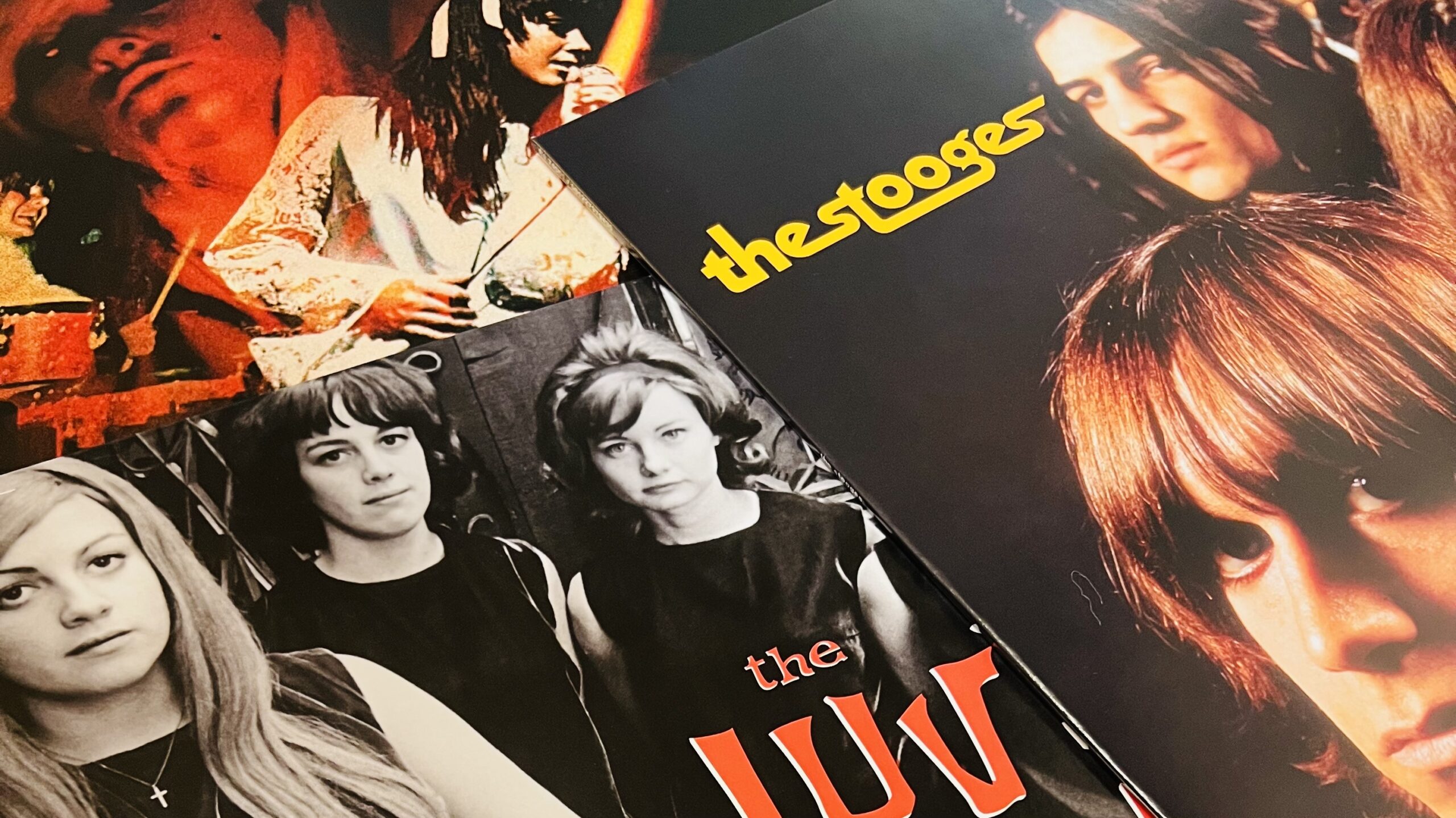
Our latest exploration of American garage rock takes us into the San Fernando Valley: to the vibrant scene of Los Angeles and its surrounding regions. This sprawling metropolitan area was home to thousands of aspiring musicians during the mid-sixties, and the exciting sounds that emerged from the groups that they formed would ultimately redefine popular music for a new era.
It was during the sixties that Los Angeles truly began to challenge New York City in terms of American cultural supremacy. Like New York, L.A. had a number of advantages that most other massive cities lacked: several major labels, many mid-sized ones, and countless aspiring imprints; hordes of professional songwriters, producers, and studio musicians; myriad outlets in print, radio, and television; a vast network of clubs to showcase local talent to receptive audiences.
These plentiful resources meant that several of Los Angeles’ best – and best-marketed – bands were uniquely positioned to become national acts. A number of the groups featured in this article would score legitimate hits, and some would establish long and successful careers in the mid-sixties. With that said, many of these bands remained obscure, only to be rediscovered as their once-forgotten tracks began appearing on garage rock compilation series such as Pebbles, Boulders, and Back From the Grave.
The breadth of the Los Angeles scene allows for this feature to have a strong emphasis on the prime years between 1965-67. With L.A. serving as something of a cultural harbinger, local bands – even those from the suburbs – seemed to begin experimenting with psychedelia far earlier than their counterparts in most other locales. These influences would merge with gritty garage sounds to create some of the most forward-thinking singles of rock music’s golden era, and despite the fact that at least a half-dozen of these songs should be well-known to even garage novices, they just felt too important to omit.
Those “big” songs are mostly available on Spotify, but to really understand the variety and depth of the L.A. scene, one has to explore some lesser-known, harder to find tracks. As was the case with the previous few installments of An Introduction To, this means two different playlists will be found below. The full thirty-track one can be accessed via YouTube (and YouTube Music), while a condensed Spotify version is also available. A handful of the best songs here – including an essential one from The Human Expression – can only be found on the YouTube version. Enjoy!
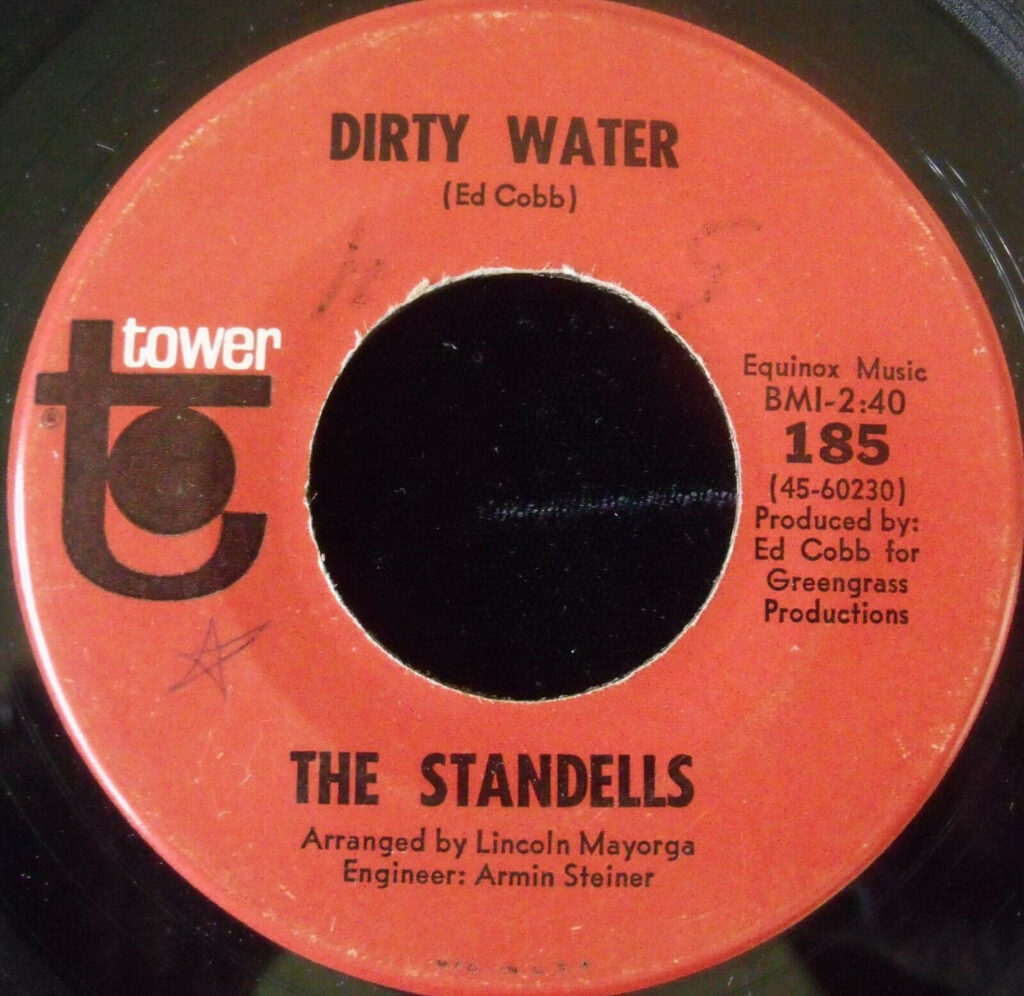
In case you were wondering why this track was absent on our survey of New England garage rock, it’s because the ultimate ode to Boston was actually recorded by an L.A. group. Written by Ed Cobb – who produced the song – “Dirty Water” has become a standard celebratory ode at Red Sox and Bruins games, and a point of pride among Bostonians. Of course, it wouldn’t be a garage classic without a seedy element: the track was allegedly written by Cobb after an incident in which he was mugged alongside the Charles River.
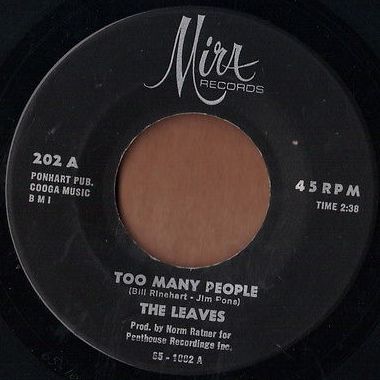
Best remembered for their electrifying 1966 recording of “Hey Joe” – a song subsequently covered by upwards of half the bands on this list – The Leaves were among L.A.’s most successful garage acts. Their debut single, “Too Many People” is a rollicking original composition that gained the group their first exposure on local radio. It was repurposed as the closing track to their 1966 debut LP.
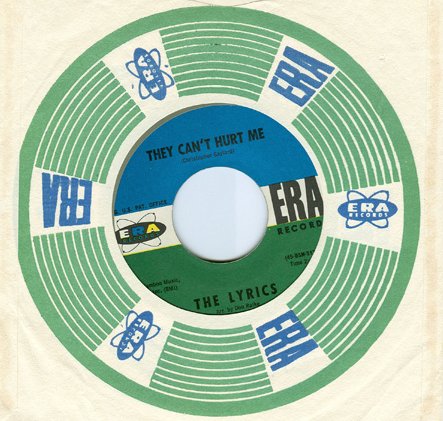
Venturing about as far as we will beyond the Los Angeles suburbs, The Lyrics hailed from Oceanside – some sources say neighboring Carlsbad – but their career-defining single was recorded at L.A.’s legendary Gold Star Studios. The stomping “So What!!” was produced by Don Ralke – who helmed a wide variety of sessions from rock, pop, jazz, and exotica groups – and the track is given its signature through a sneering performance by vocalist Chris Gaylord.
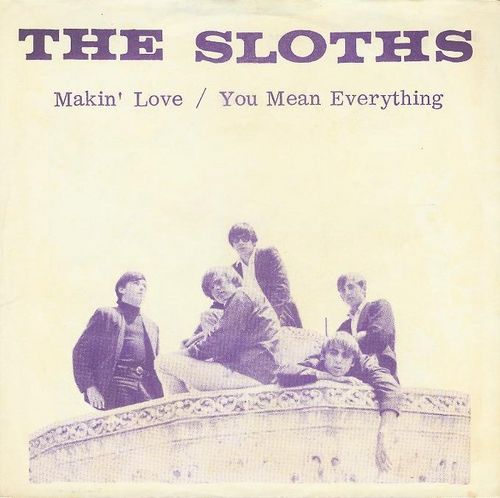
The Sloths released just one single, and while its lead track, “Makin’ Love,” is rightfully considered a lost classic of the garage genre, I’m opting to include its flip side here. “You Mean Everything” trades the reckless, Bo Diddley-isms of “Makin’ Love” for warm, acoustic 12-string chords. It’s still charmingly shambolic, and more melodically rewarding than its A-side.
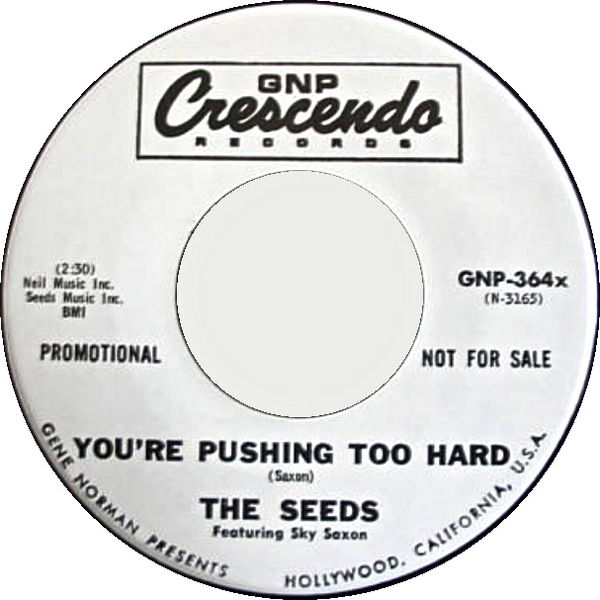
One of the undisputed classics of the garage era, The Seeds’ second single became a minor national hit (reaching the top 40) before eventually being immortalized as part of the original 1972 Nuggets compilation. Written by Sky Saxon during a trivial moment of boredom, “Pushin’ Too Hard” (as it was re-titled in subsequent single releases and as the centerpiece to The Seeds’ self-titled debut LP) became an anthem of frustration, not unlike The Rolling Stones’ then-current chart-topper, “Satisfaction.”
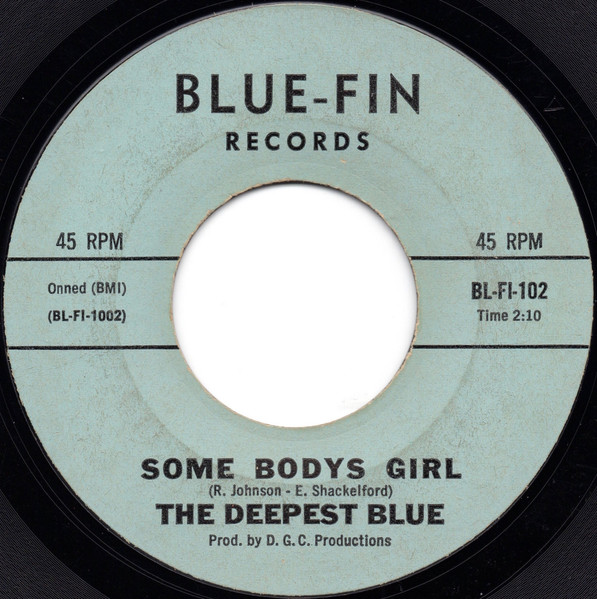
Known to many as the location of L.A.’s other airport, Ontario was a modest-sized town of around 50,000 in the mid-sixties. Of the local groups that made their way to the big city, The Deepest Blue were among the most interesting. Their tiny label, Blue-Fin Records, only released four singles – including one by The Deepest Blue under the band name Egyptian Candy. Of this tiny catalog, “Some Body’s Girl” is the standout: a track that uses a jaunty guitar riff and droning electric organ to strong effect.
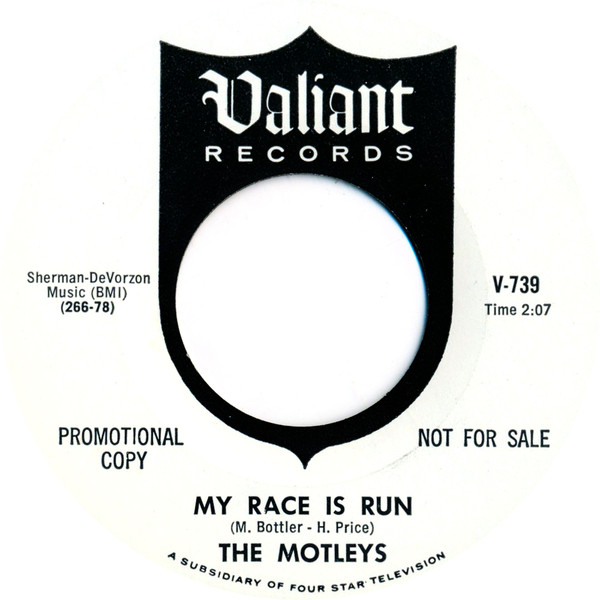
Jangly Beatle-isms abound in this B-side to The Motleys’ second-and-final single. An original composition by the group, “My Race is Run” wraps its charming vocal melody in great group harmonies. It’s all very catchy – and quite professional sounding – but the group’s label, Valiant Records, ultimately passed on releasing the track (and its A-side, “You”), instead focusing their efforts on a new signee: The Association.
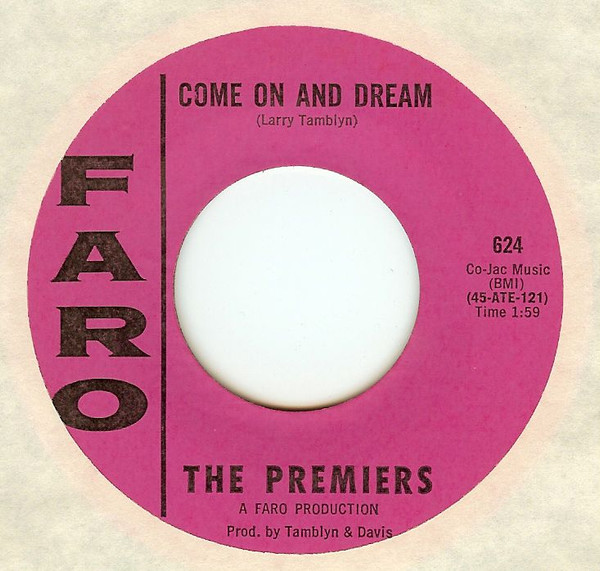
Best known for their 1964 recording of the garage standard “Farmer John,” The Premiers were one of the most successful Mexican-American groups on the L.A. area scene. Far more interesting than their signature hit is this 1966 B-side, written by the track’s producer – and Standells leader – Larry Tamblyn. “Come On and Dream” lives up to its title in a breezy, evocative chorus that bridges the often-narrow gap between garage rock and psychedelia.
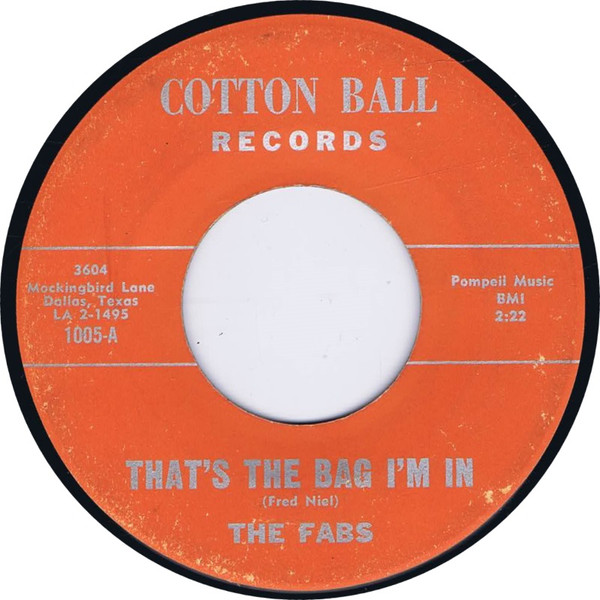
There’s a debate amongst garage rock fans as to where this group actually came from. According to the liner notes from the Back From the Grave series, The Fabs hailed from Texas. This seems to be confirmed by their appearance on a compilation called Texas Garage Bands, and the fact that their lone single was released on a Dallas-based label. However, plenty of sources confidently cite them as a Fullerton, California group. Perhaps I’ll just leave this track here, and put it’s nearly-as-good B-side (“Dinah Wants Religion”) on our upcoming Texas feature.
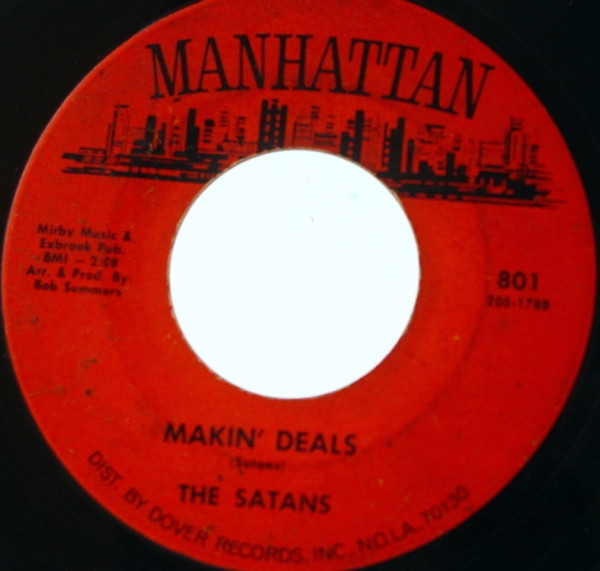
One can say with near-absolute certainty that The Satans were quite familiar with The Rolling Stones by the time that their lone single, 1966’s “Makin’ Deals,” was released; even if the song didn’t sound a lot like the work of the far more famous London band. Consider this though: did the Stones ever hear this nearly-forgotten obscurity? I mean, here’s a rock band buzzing through a sleazy instrumental backdrop, with lyrics delivered from the perspective of Satan, featuring the line “can you guess my name?” Keep in mind, this track dropped over two years before the Stones recorded “Sympathy for the Devil.”
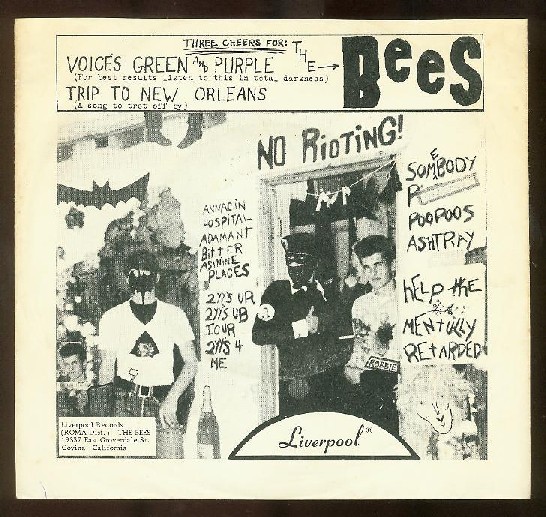
Okay, the previous song may have been delivered from the perspective of Satan, but this lone single from Covina’s The Bees is easily the most demonic recording to emerge from the L.A. metro area during the mid-sixties. “Voices Green and Purple” is a harrowing acid nightmare from a band that sounds a world removed from the surrounding scene – say nothing of the comfortable suburb from which they emerged. It’s become a staple of garage rock compilations since appearing on the third installment of the Pebbles series in 1979, but “Voices” remains an unsettling listen.
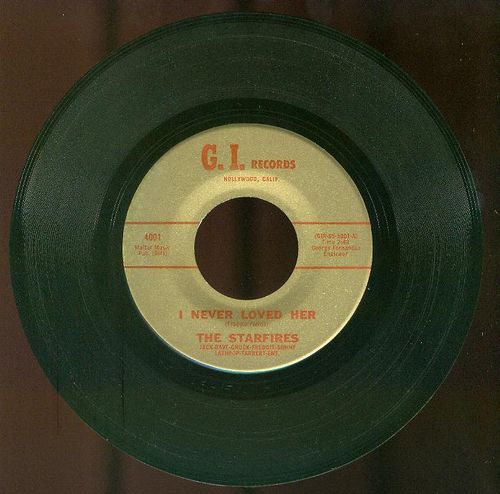
Uniquely menacing, the signature track from The Starfires epitomizes West Coast sixties punk. While it barely registered at the time, “I Never Loved Her” has since become a compilation mainstay. This second life has made the single a particularly prized item among garage enthusiasts, as original copies of the 1965 G.I. Records release have been known to fetch over $1000 on collector’s markets.
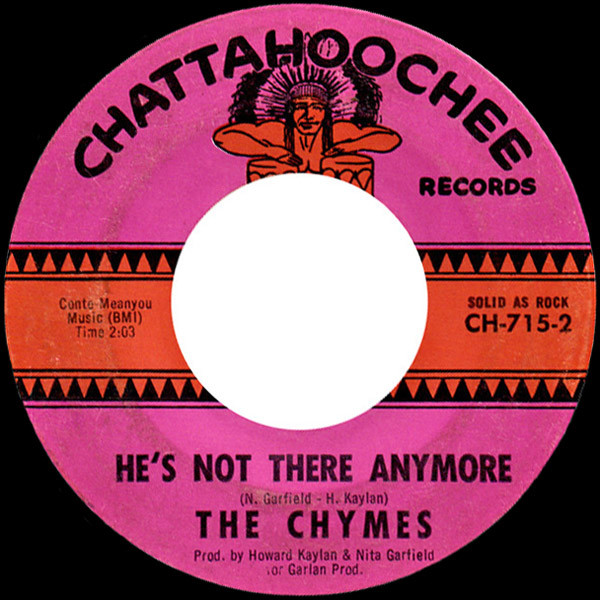
A sharp minor-key track, “He’s Not There Anymore” is a little-known classic from one of the few female-fronted rock bands on the Los Angeles garage scene. The Chymes released just one single during their brief career – and may have ultimately chosen the wrong track for its “plug” side – but their signature song is nothing less than outstanding.
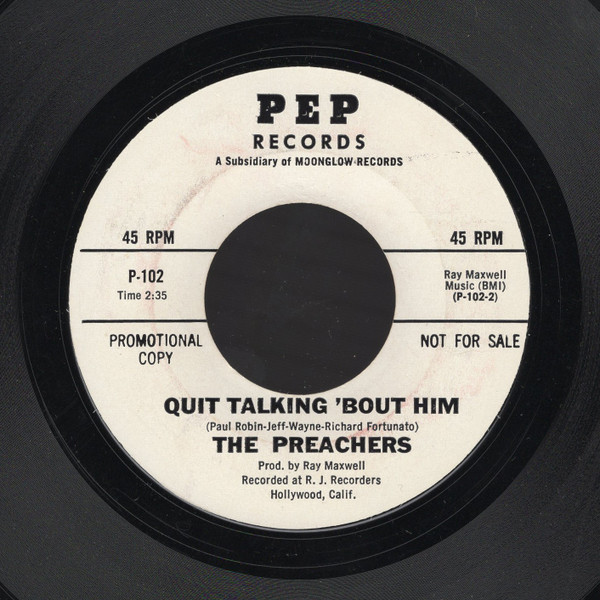
While their 1965 cover of “Who Do You Love?” was canonized by its prime placement on the first volume of the influential Pebbles series, The Preachers recorded another minor classic with this moody B-side. Melancholy was never as central to the L.A. garage sound as it was in New England for example, but “Quit Talking ‘Bout Him” proved that Southern California groups could still pull off “brooding,” despite the consistent sunshine of their surroundings.

All-female garage bands were extremely rare during the sixties, and Female Species were among the most intriguing. Formed in Whittier, California by sisters Vickie and Ronnie Gossett, the group began life as a garage band, before eventually making decidedly more polished recordings as a country act in the seventies and beyond. Arguably the most celebrated track from their first incarnation, the downbeat “Tale of My Lost Love” would find its title repurposed on a 2021 Numero Group compilation of the Gossett sisters’ catalog.
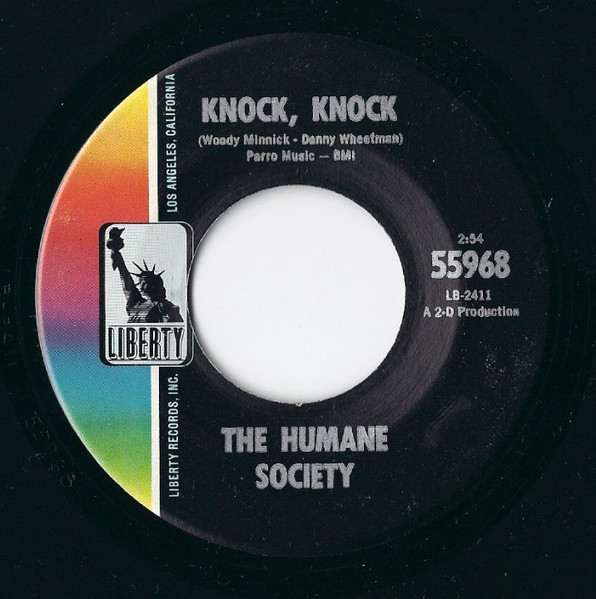
Simi Valley may be known as a longtime Republican bastion – though the Traitorous Orange Dipshit finally lost that streak in 2020 – but there’s nothing all that conservative about this Stones-y creeper from the local punks who called themselves The Humane Society. I’d like to think that the reverberations of this sinister track keep Reagan from resting all that peacefully.
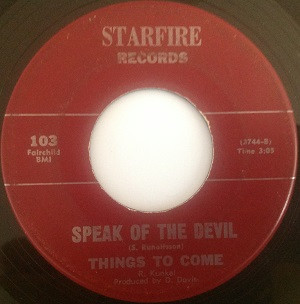
The second half of an ominous double-shot, the B-side to the first single from Long Beach’s Things to Come is another Satan-centric track from the suburbs. Like “Makin’ Deals” before it, “Speak of the Devil” leaves quite the impression with its combination of bleak instrumentation and threatening lyrics. This kind of thing was probably too far out to make a dent in early-1967, but it still packs a punch today.
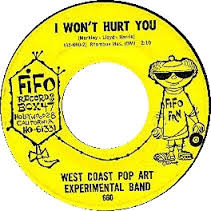
I had no idea that this track was featured in a Wes Anderson movie before picking it for this list; Isle of Dogs is the only Anderson movie that I’m yet to see. It all makes perfect sense though. Anderson and his musical supervisor Randall Poster have long since established a signature vibe, and “I Won’t Hurt You” fits it to a tee. While the maddeningly-named West Coast Pop Art Experimental Band may have several songs that better fit the typical garage styling, this is a special track.
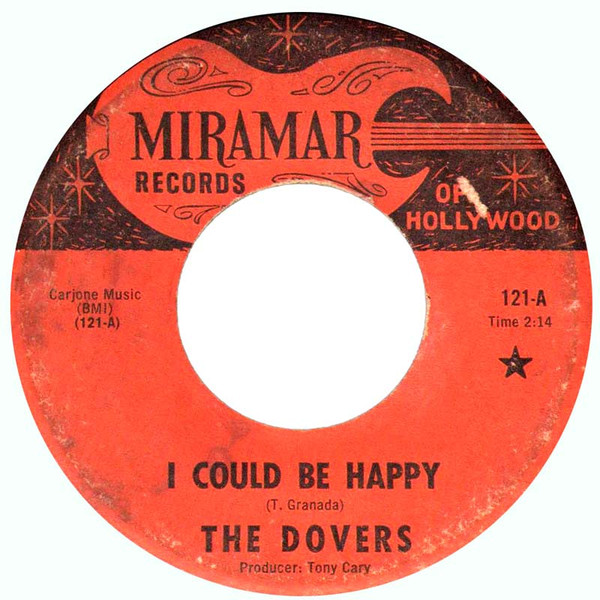
Of all the garage bands that actually remained garage bands – the ones who never recorded an album, never had a hit, never reunited for a decades-late victory lap, never had a feel good ending – there may be none more beloved than Santa Barbara’s Dovers. And rightfully so. Though their entire catalog consists of just eight tracks, it’s a remarkable body of work nonetheless. Their inclusion in this feature was inevitable (even if Santa Barbara is way too far from L.A. to reasonably be considered a suburb), but a real question remained: what track? I (and many others) have vociferously sang the praises of their masterpiece, “What Am I Going to Do.” Then there’s its flip side, “She’s Gone”: a legitimate garage classic. Ooh, those last two A-sides (“The Third Eye” and “She’s Not Just Anybody”) are amazing too. Ultimately, I went with their second single, “I Could Be Happy.” After all, it’s the only one on Spotify right now. And it’s gorgeous.
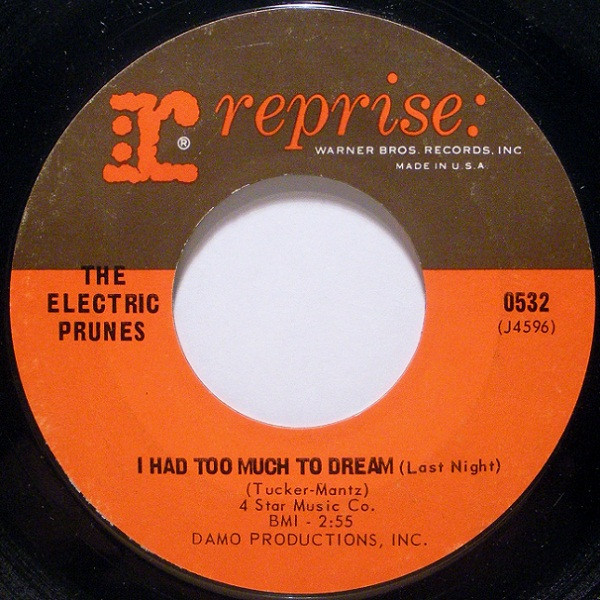
A true garage/psych masterpiece, the signature track from L.A.’s Electric Prunes is one of the most iconic rock tracks of its era. Electrifying, disorienting, but wholly accessible, “I Had Too Much to Dream” would become enshrined in the pantheon when it was chosen by Lenny Kaye as the leadoff track for his ultra-influential 1972 garage compilation, Nuggets.
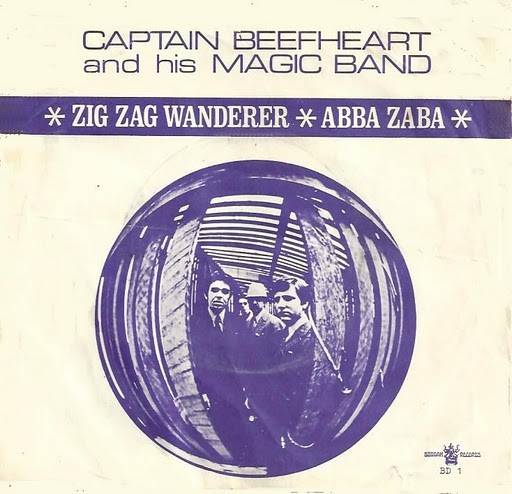
Crawling out from the desert north of Los Angeles, Don Van Vliet (aka Captain Beefheart) would in time become a titanic figure in the realm of American avant-garde art. However, in his early work with the Magic Band, Beefheart sounds more like a garage rocker with an offbeat edge. “Zig Zag Wanderer” is a fantastic single, and a highlight from 1967’s outstanding Safe As Milk: showcasing the Magic Band’s unique rhythmic interplay, and impressive work from a young Ry Cooder.
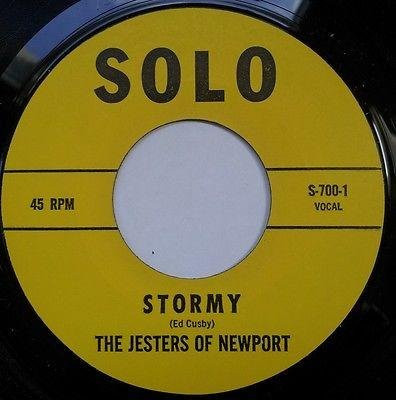
A sinister shapeshifting track – beginning with a motif from Peter and the Wolf – “Stormy” was an impressive showing from a group with only one single to their name. Not much seems to be known about The Jesters of Newport – aside from the fact that they were actually from Balboa – but both sides of their lone release would eventually find a home on the Back From the Grave series.
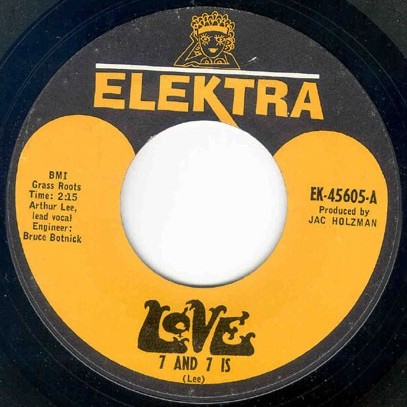
I wanted to go with a less obvious pick from Arthur Lee’s Love – for the record, nothing from 1967’s brilliant Forever Changes really qualifies as garage rock – but “Seven & Seven Is” is really one of the inner circle garage masterpieces. Explosive. Propulsive. Intense. Love were giants on the Los Angeles scene, and though they would ultimately be overshadowed nationally by lesser groups, their initial three-album run remains something to behold.
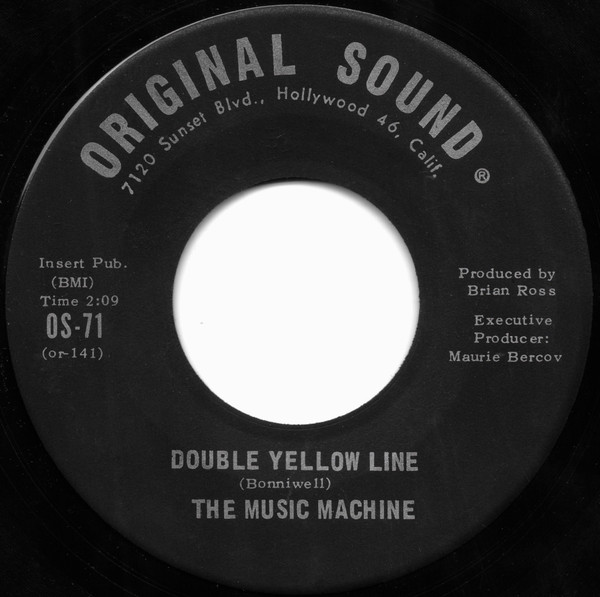
Led by Sean Bonniwell – who would later affix his last name to the group’s moniker – The Music Machine were among the most successful acts on the L.A. scene. Bonniwell’s gruff vocals would remain one of the group’s calling cards, as too would the organ work of Doug Rhodes. Both figure prominently in the band’s signature track, “Talk Talk,” and also in this excellent A-side from 1967. “Double Yellow Line” mixes the band’s more aggressive impulses with an intriguing melodic hook and a locked-in rhythm that evokes the driving imagery of its lyrics.
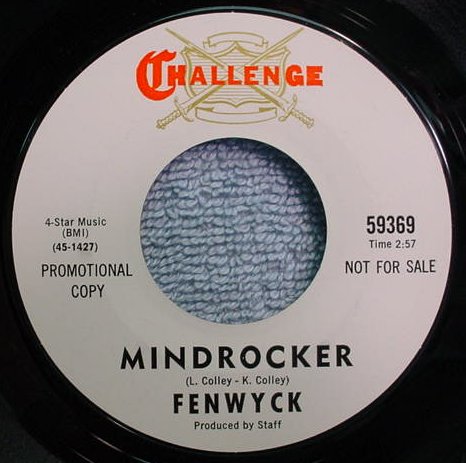
Hitting a sweet spot somewhere between pop, garage, and psychedelia, Fenwyck’s “Mindrocker” has been a long-time fixture of sixties rock compilations. The fact that it doesn’t pull too far in any one of the aforementioned directions makes it an excellent entry point for those just dipping their toes into the world of below-the-radar sixties music.
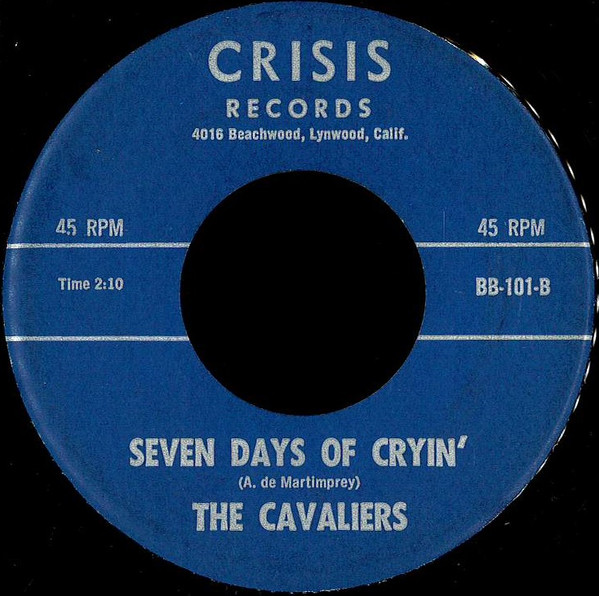
Hailing from Lynwood, The Cavaliers actually existed as a band for nearly a decade, but apparently only entered the recording studio long enough to produce one single. While both sides have been featured on garage comps like Back From the Grave and Last of the Garage Punk Unknowns, it’s the B-side that gets the call for this feature. “Seven Days of Crying” rides a driving beat, until a twinkling, vaguely baroque-inspired break interjects. It’s a cool track from a mostly-forgotten group.
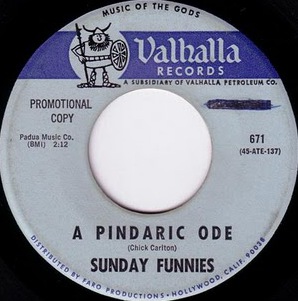
One of the most unique tracks on this list, the A-side to Sunday Funnies’ only single matches garage, psych, and spoken work to fascinating effect. Many of the lyrics are tough to decipher, which – along with the wordless backing harmonies – serve to give the track a surreal quality. Adding to this is the song’s backwards-masked fadeout. Unfortunately, the 45’s label – which informs collectors that Valhalla Records is “a subsidiary of Valhalla Petroleum Co.” – serves as a reminder of the biggest downside of an otherwise noble hobby.
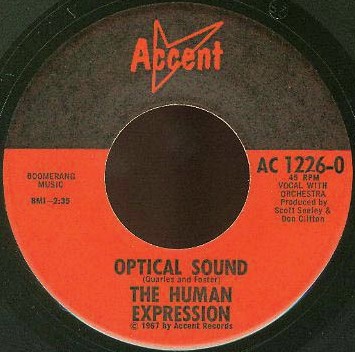
Among the most legendary of all American garage bands, The Human Expression crafted a five-single discography of remarkable range and depth. Collected as the compilation Love at a Psychedelic Velocity (named after one of their finest tracks), the group looms far larger in the eyes of today’s collectors than they did on the L.A. scene of the mid-sixties. Considered by many to be their pinnacle, “Optical Sound” is a brilliantly dark slice of psychedelia: alluringly nightmarish, but tuneful all the same.
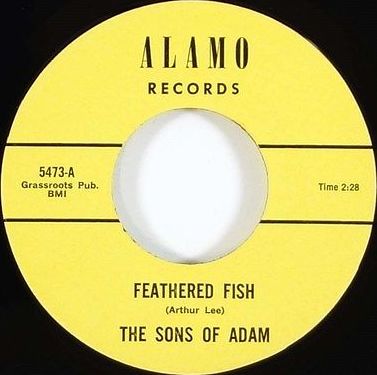
Regulars of garage and psych compilations, The Sons of Adam released three well-regarded singles between 1965-66. The best of these, “Feathered Fish” was written by Arthur Lee, and even includes a similar instrumental motif to the aforementioned “Seven & Seven Is.” The pummeling, Love-meets-The Who track gained a second life by its primo placement on the second installment of the Pebbles series in 1979.
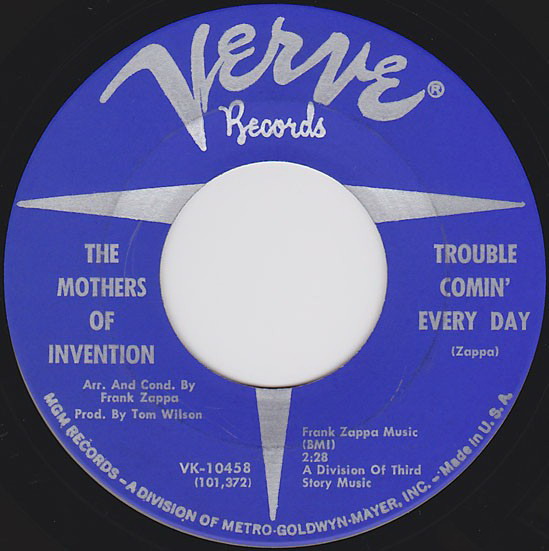
Though I’ve rarely been all that impressed by Frank Zappa – I don’t find him anywhere near as amusing as he clearly found himself – The Mothers of Invention’s 1966 debut, Freak Out!, is a legitimately fantastic record. While the double-LP dabbles in a wide array of sounds, its highlight is a true garage classic. “Trouble Every Day” was Zappa’s response to the 1965 Watts riots, making it a somewhat-rare example of a politically-charged garage track. Its rough-edged sound, Dylan homage/parody, biting social commentary, and infamous ad-lib (“You know something, people? / I’m not Black, but there’s a whole lot of times I wish I could say I’m not white”) make for a thoroughly compelling recording from an enormously influential group.



